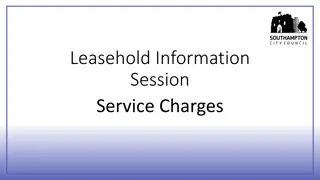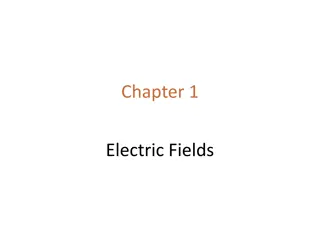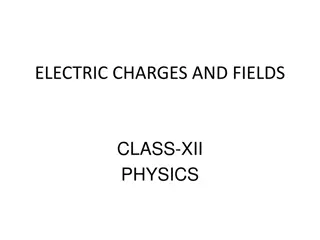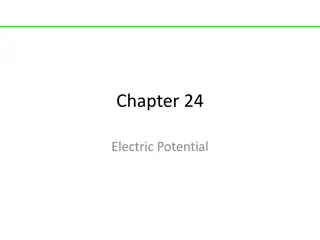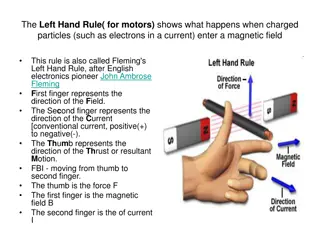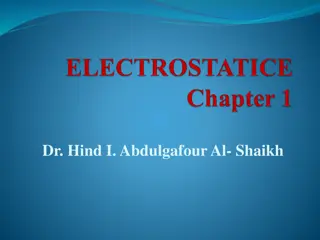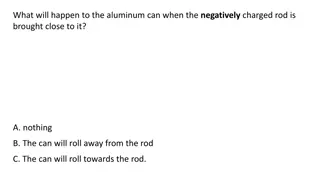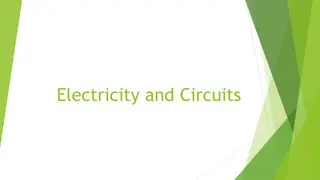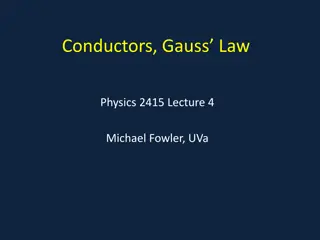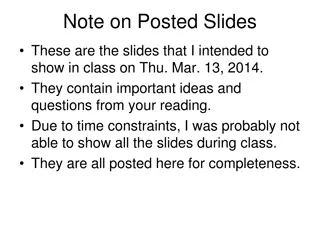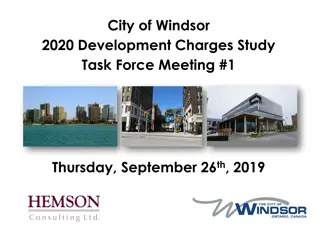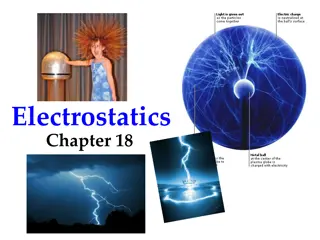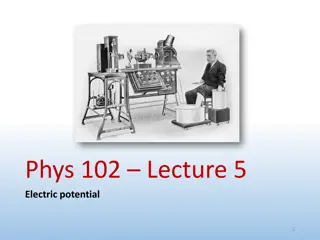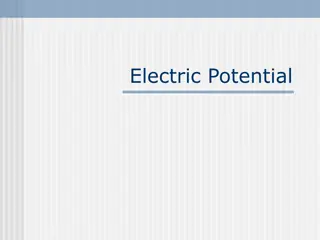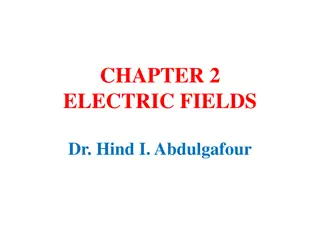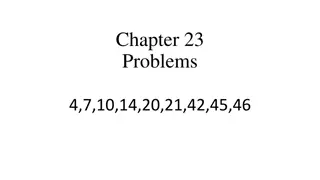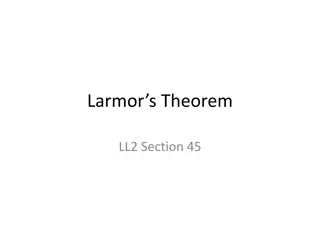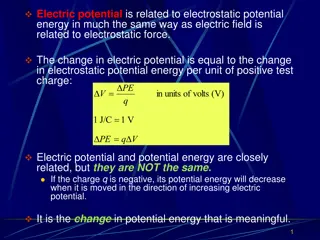Understanding Electric Fields and Charges in Different Scenarios
Explore various scenarios involving electric fields and charges such as the E-field at the center of a conducting sphere, the effect of total charge on E-field, E-field above a charged conductor, charge distribution on the surface of a copper sphere with a hollow, field inside a charged non-conducting shell, and surface charge distribution near a point charge.
Download Presentation

Please find below an Image/Link to download the presentation.
The content on the website is provided AS IS for your information and personal use only. It may not be sold, licensed, or shared on other websites without obtaining consent from the author. Download presentation by click this link. If you encounter any issues during the download, it is possible that the publisher has removed the file from their server.
E N D
Presentation Transcript
A point charge +q sits outside a solid neutral conducting copper sphere of radius A. The charge q is a distance r > A from the center, on the right side. What is the E-field at the center of the sphere? (Assume equilibrium situation). A) |E| = kq/r2, to left B) kq/r2 > |E| > 0, to left C) |E| > 0, to right D) E = 0 E)None of these +q r A
In the previous question, suppose the copper sphere is charged, total charge +Q. (We are still in static equilibrium.) What is now the magnitude of the E-field at the center of the sphere? A) |E| = kq/r2 B) |E| = kQ/A2 C) |E| = k(q-Q)/r2 D) |E| = 0 E) None of these! / it s hard to compute +q r A
We have a large copper plate with uniform surface charge density Imagine the Gaussian surface drawn below. Calculate the E-field a small distance s above the conductor surface. A) |E| = / 0 B) |E| = /2 0 C) |E| = /4 0 D) |E| = (1/4 0)( /s2) E) |E| =0 s
A neutral copper sphere has a spherical hollow in the center. A charge +q is placed in the center of the hollow. What is the total charge on the outside surface of the copper sphere? (Assume Electrostatic equilibrium.) qouter = ? A) Zero B) -q C) +q D) 0 < qoutter < +q E) -q < qouter < 0 +q To think about: What about on the inside surface?
A cubical non-conducting shell has a uniform positive charge density on its surface. (There are no other charges around) What is the field inside the box? + + + + + + + + + + E=? A: E=0 everywhere inside B: E is non-zero everywhere inside C: E=0 only at the very center, but non-zero elsewhere inside. D: Not enough info given + +
E field inside cubical box (sketch) E-field inside a cubical box with a uniform surface charge. The E-field lines sneak out the corners!
A point charge +q is near a neutral copper sphere with a hollow interior space. In equilibrium, the surface charge density on the interior of the hollow space is.. = ? A) Zero everywhere B) Non-zero, but with zero net total charge on interior surface C) Non-zero with non- zero net total charge on interior surface. +q
A HOLLOW copper sphere has total charge +Q. A point charge +q sits outside at distance a. A charge, q , is in the hole, at the center. (We are in static equilibrium.) What is the magnitude of the E-field a distance r from q , (but, still in the hole region) A) |E| = kq /r2 B) |E| = k(q -Q)/r2 C) |E| = 0 D) |E| = kq/(a-r)2 E) None of these! / it s hard to compute +q +q r a +Q
A HOLLOW copper sphere has total charge +Q. A point charge +q sits outside. A charge, q , is in the hole, SHIFTED right a bit. (We are in static equilibrium.) What does the E field look like in the hole region? A) Simple Coulomb field (straight away from q , right up to the wall) B) Complicated/ it s hard to compute +q +q +Q


